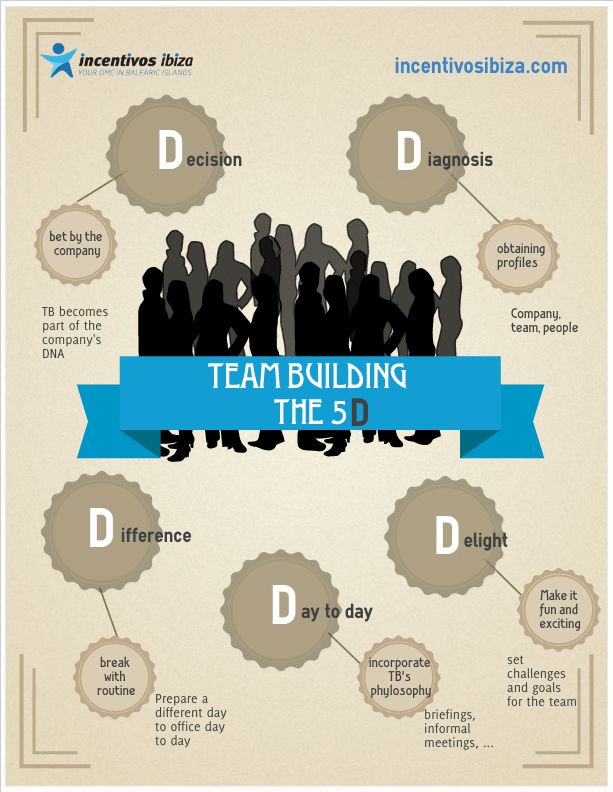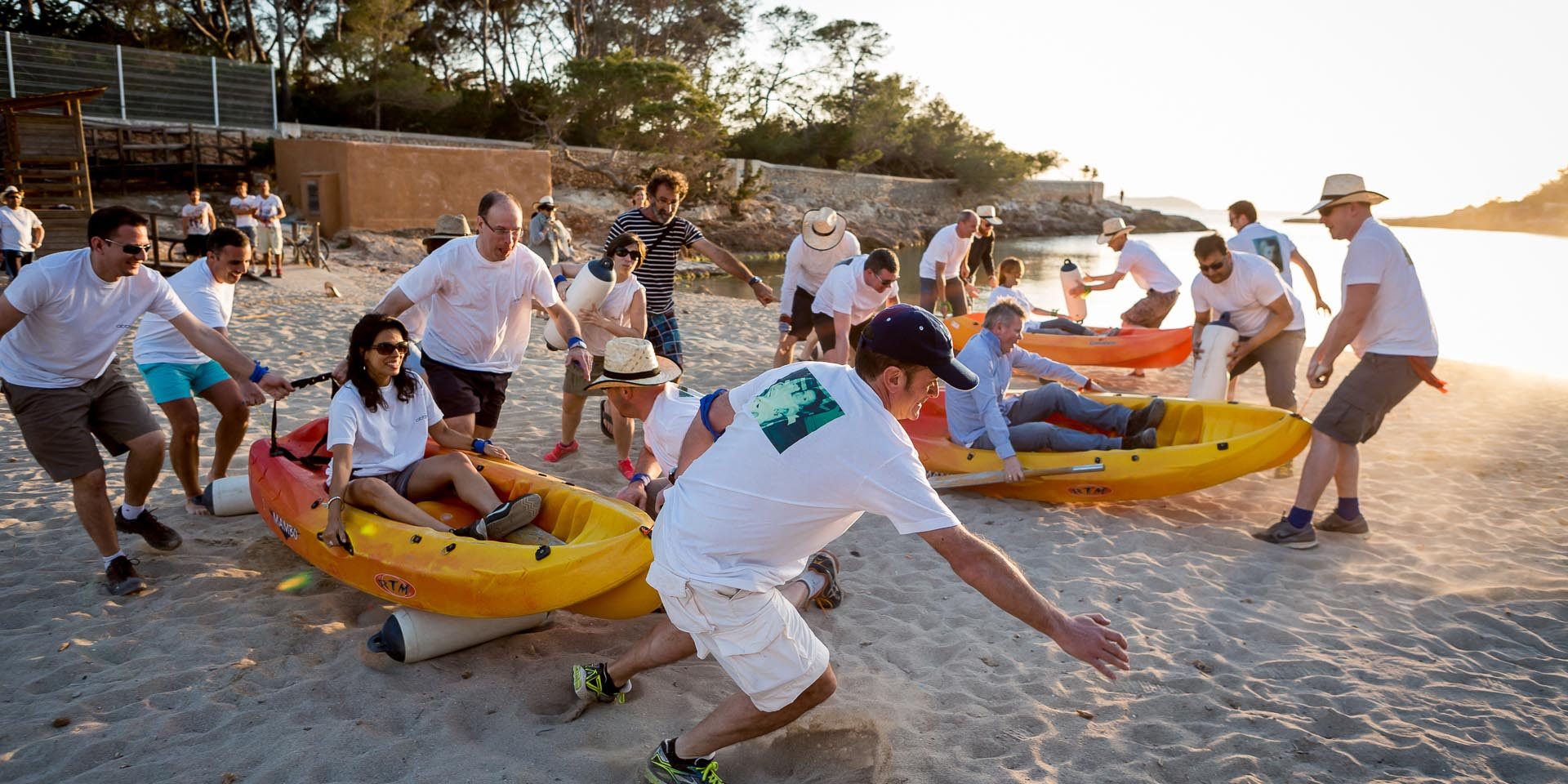A few days ago we mentioned Team Building and promised to explain its key elements. We usually establish these as the “5 Ds“: Decision, Diagnosis, Difference, Delight and Day by Day:
Decision
The implementation of TB strategies must be decided by the company’s top management. Since we cannot be OK with just an isolated experience – more about this when addressing the fifth D – our managers should know that this type of dynamics will become part of corporate DNA and, consequently, the way the organization will interact with its collaborators.
Diagnosis
When organizing an activity we must take into account the profiles of the company, the team and each of its members. It is also important we know the goals we are pursuing. At this point, whoever is our ally at the time of developing the activity is key. Having a horseback riding instructor — which would be great for a horseback tour — or a team management expert who also has different resources at his disposal are just not the same. Through the profile we build together, we can select the activity that best fits it — and our goals.
Difference
A day of team building must be an extraordinary day, which breaks with the daily routine. It is all about proposing a “no-work” day to our collaborators —no telephones, no schedules, no meetings. No suits or ties, just comfy clothes! Let’s get out of the office and face challenges as a team!
Delight
A TB session should be delightful, exciting. Let’s not forget that one of our goals is to take our teams out of context. There is nothing more stimulating — as well as fun — than achieving an objective through the collaboration of all involved.
Day to day
When we bet on TB we must be clear that its philosophy has to become part of our human resources strategy. As Scumadore points out, “most TB activities fail because they are done only once and then fall into oblivion.” By this, we do not mean that you should be taking your team to obstacle courses or ballooning on a daily basis — not every week, not every month, either! Do not panic. What we want to convey is that spaces must be created so that whatever is harvested in a session can continue to grow in the office’s day to day (informal meetings, small daily briefings, etc.).
 If you take these five elements into account, your Team Building planning has many chances to be focused, consequently becoming effective. We will continue deepening team building strategies in future entries.
If you take these five elements into account, your Team Building planning has many chances to be focused, consequently becoming effective. We will continue deepening team building strategies in future entries.
If you want us to offer more information, propose a topic for future posts, or if you want to tell us your experience, we encourage you to leave us a comment.

